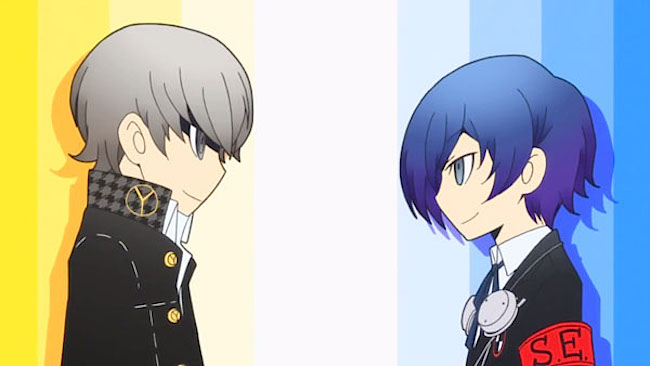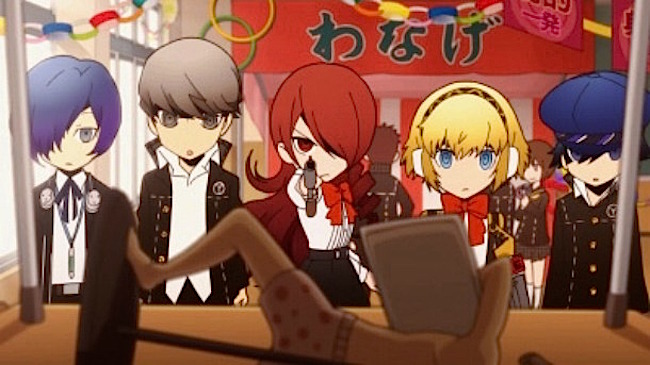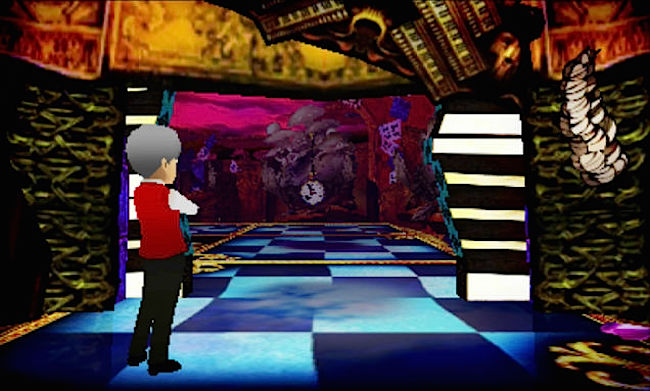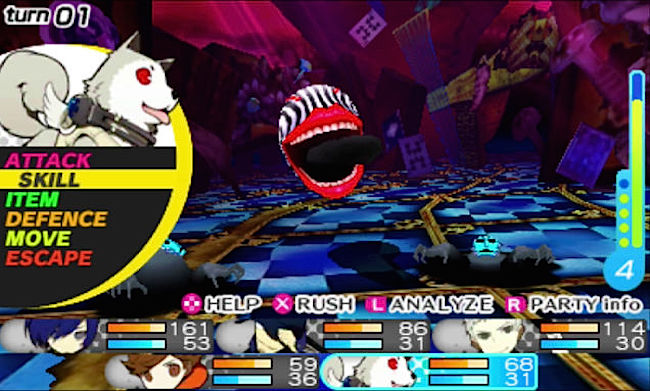
There can be a lot of hesitation when a crossover game is announced, particularly when each individual franchise is incredibly popular and has its own large fanbase. Persona Q: Shadow of the Labyrinth combines the Persona and Etrian Odyssey series in a way which unexpectedly feels completely natural and almost makes you wonder why it wasn’t done earlier.

Upon starting up Persona Q, the player must make a decision of which characters you would like to focus on; the Specialised Extracurricular Execution Squad of Persona 3 or the Investigation Team from Persona 4. You will still meet up with the other team at a specific point within the story, the choice only determines which main character will be in your party permanently and conversations will tend to be more focused on the group that you chose and the history from their game of origin. This decision means that there is some inbuilt replayability with New Game+ as each group has its own nuances and some slightly altered scenarios but the overall plot is shared.
Persona Q is set approximately halfway through the events of Persona 3 and 4 when they encounter an odd occurrence in each of their own worlds and times which brings both parties together in an alternate dimension of P4’s school; Yasogami High. Upon some exploration, they soon learn that they are trapped within the school and regular classrooms have been transformed into themed dungeons based on the ongoing culture festival such as Alice in Wonderland and a Group Date Cafe. We meet two new faces within the initial dungeon, Zen and Rei, whom the story is based around as both are missing their memories but are also looking for a way out so the sensible solution is to join forces in finding the exit.

Even though the game utilises characters and relationships from previous Persona games, prior knowledge is not required to enjoy Persona Q as they explain any necessary information fairly well in a way that isn’t too forced since they are usually talking to the other group who has no idea what your characters have experienced which makes a nice entrance point for newcomers to the series. The game is a nice nod to long term fans, as there are many jokes and references thrown in, yet remains free of any major plot point spoilers for those who may be starting out. There are some minor character spoilers for P3 and P4 in case they matter to some, but not enough to cause any concern that the experience will be ruined should one choose to go back and play the original games.
The moment you enter one of the labyrinths, the elements from Etrian Odyssey immediately become clear. You move through the dungeons on a grid from a first person point of view, traversing one square for every step. As you progress through the dungeons, they truly earn their title of labyrinths with many branching pathways and puzzles to wrap your head around. The touch screen is your canvas to map the labyrinths that you are exploring as you draw in lines to show the walls of where you are walking and various symbols to represent the multitude of things that you will come across in your travels from basic doors to clues for puzzles that you will have to come back to. It’s important to not underestimate the usefulness of mapping, especially in the later dungeons, as you can spend a long time backtracking, trying to find how you’re supposed to progress and all it takes is not seeing a shortcut and you could be close to tearing your hair out from frustration, which I experienced firsthand during my playthrough.

Each floor has a percentage at the top of the touch screen which indicates the percentage of tiles you have stepped on and when you have gotten 100% there is a special treasure chest that will unlock, giving you some useful items for your journey. I have a minor gripe with this system however as it seems ridiculous to be required to step on every tile even if you could just map it out from what you can see because it’s clearly just a plain three by three room. Former Etrian Odyssey games have had the ability to 100% a floor just by mapping it out but they removed that ability from Persona Q which is tedious and especially annoying when you are required to step on trap tiles that will deal damage to you unless you purchase items that temporarily allow you to walk on those spots.

Battles are an interesting mix of Persona and Etrian Odyssey’s systems. Your party consists of a five person team divided into two rows however you wish to arrange them. Finding an enemy’s weakness or landing a critical hit is crucial in battle as you receive the Boost status, instead of One More from the Persona series, which allows you to use any skill without the usual cost. All the Persona users gain the ability to equip a Sub-Persona which widens the variety of skills they have available to them at any time, and planning what kind of role you want each of your characters to play in battle is an important part of the game’s strategy. You have to stay on your toes in battle as one wrong move could mean the end for your party. The initial learning curve for the style of battle is quite steep but it’s enjoyable once you figure out your own strategy.
Traversing the labyrinths is not a simple walk in the park as each floor requires you to solve various puzzles to progress. Many involve avoiding the large monsters that move around the map known as FOEs. Some will actively affect you by confusing your movement directions or drawing you closer to them for three steps whereas the others will just move in patterns which you will need to study in order to make it past them safely. Running into any of them will draw you into battle and they are tough battles unless you are adequately prepared to fight them. Other puzzles require thought, and there was at least one dungeon where I actually pulled out a physical paper and pen to write everything down so I could work it out. The puzzles make moving around quite a challenge and some can be downright frustrating, yet they add an extra element that would be missed were it not present.

Persona Q depicts the characters as adorable “chibis,” which I couldn’t get enough of and felt worked perfectly for the game; which is very different to the Persona character art where they are usually more realistically drawn. Most of the conversations are completely voice acted and done extremely well, having the right level of emotion for the situation. There is a lot of clever usage of 3D effects throughout the game, especially when walking around the dungeons as it provides a nice sense of depth that the game is already trying to impress on you. The only times I noticed that 3D wasn’t available were during the anime cutscenes.
Being a 60+ hour game, having good music to listen to throughout your journey is important and this game definitely delivers. The songs are ridiculously catchy, with “Maze of Life” as the main opening theme and “Light the Fire Up in the Night” to bop along to during all your battles. The music for each dungeon is also unique and identifiable, fitting the theme of that labyrinth appropriately.
 60+ hours of challenging gameplay
60+ hours of challenging gameplay
 Mapping mechanics
Mapping mechanics
 Awesome soundtrack
Awesome soundtrack
 Chibi character art style is adorable
Chibi character art style is adorable
 New Game+ for replayability
New Game+ for replayability
 Bad plot pacing
Bad plot pacing Stepping on every tile for 100% floor mapping
Stepping on every tile for 100% floor mapping Some localisation spelling errors
Some localisation spelling errors
Admittedly, when I first learned of Persona Q when it was initially announced, I was a little unsure of what the results would be – as a fan of the Persona series, and having only played some Etrian Odyssey – but my fears were quickly eased, and I was hooked. I enjoyed this game immensely, and had a hard time putting it down until the final boss was put to rest, and I haven’t even tackled New Game+ yet. I encountered a few minor problems that one could be nit-picky about, but overall they weren’t enough to diminish how good the game is. If you’re interested in JRPG/dungeon-crawlers, you should definitely give Persona Q a chance. You won’t regret it!
Disclaimer: this game was provided to us by the publisher, and reviewed on 3DS across 60+ hours of gameplay.











